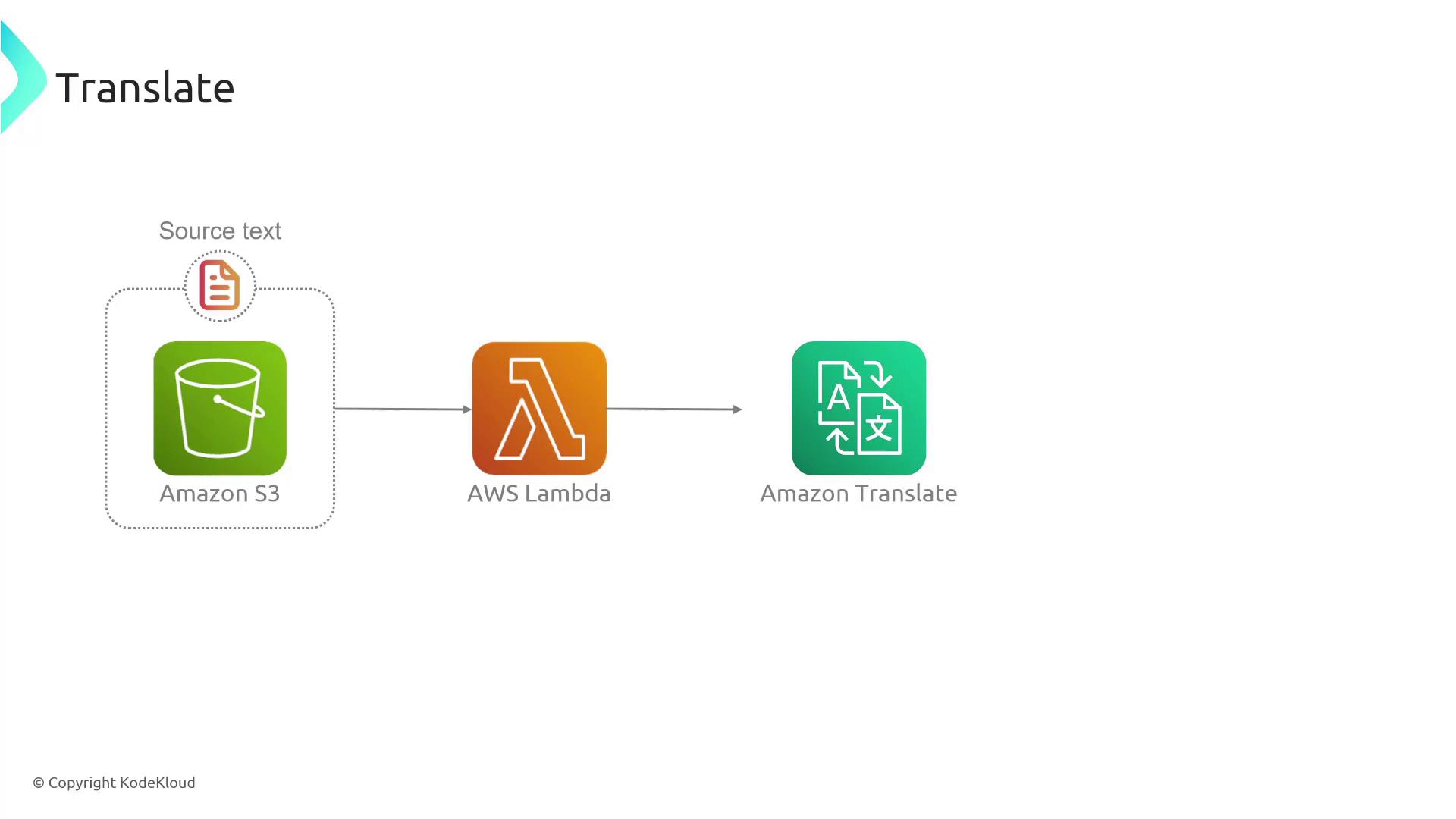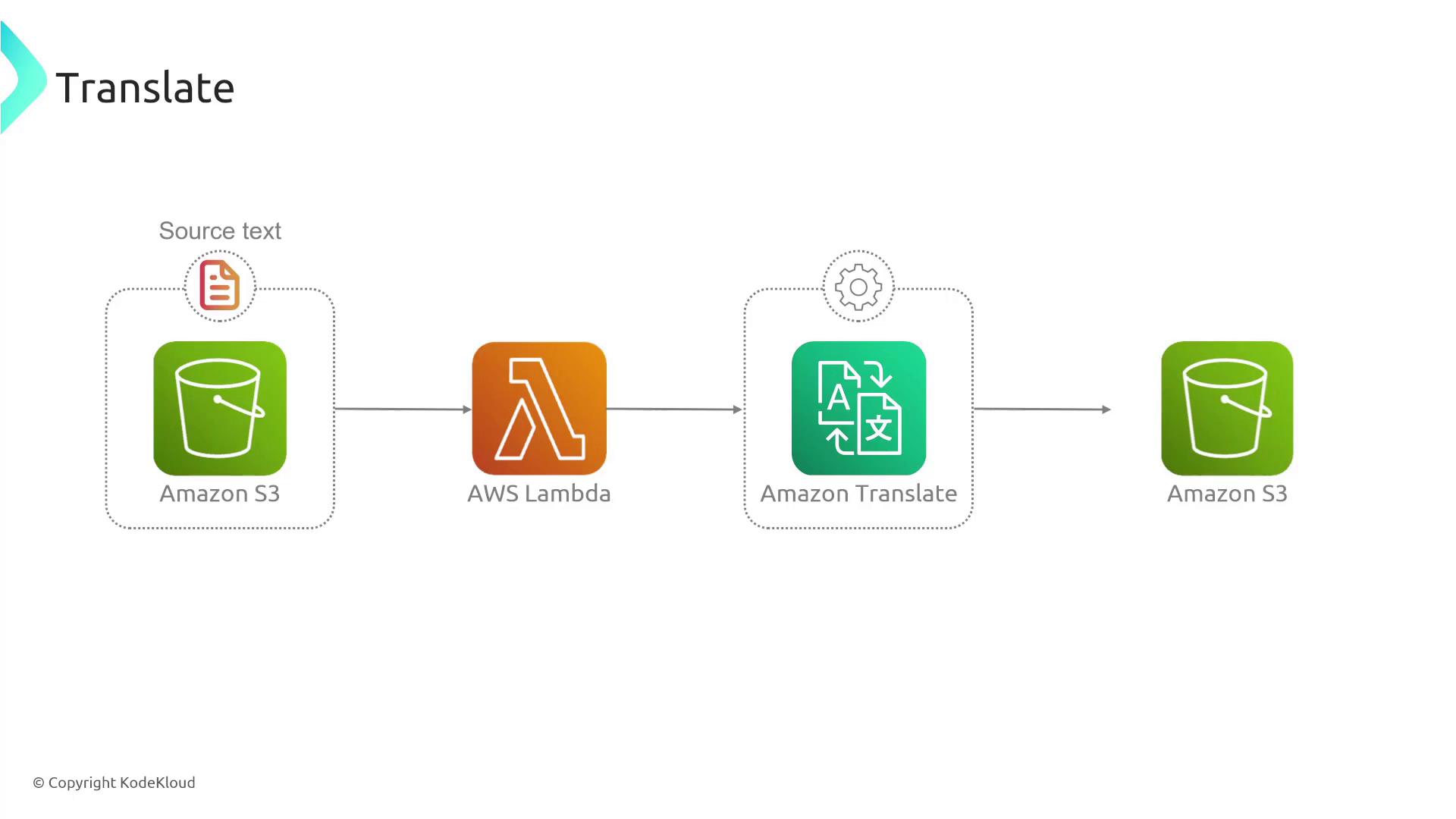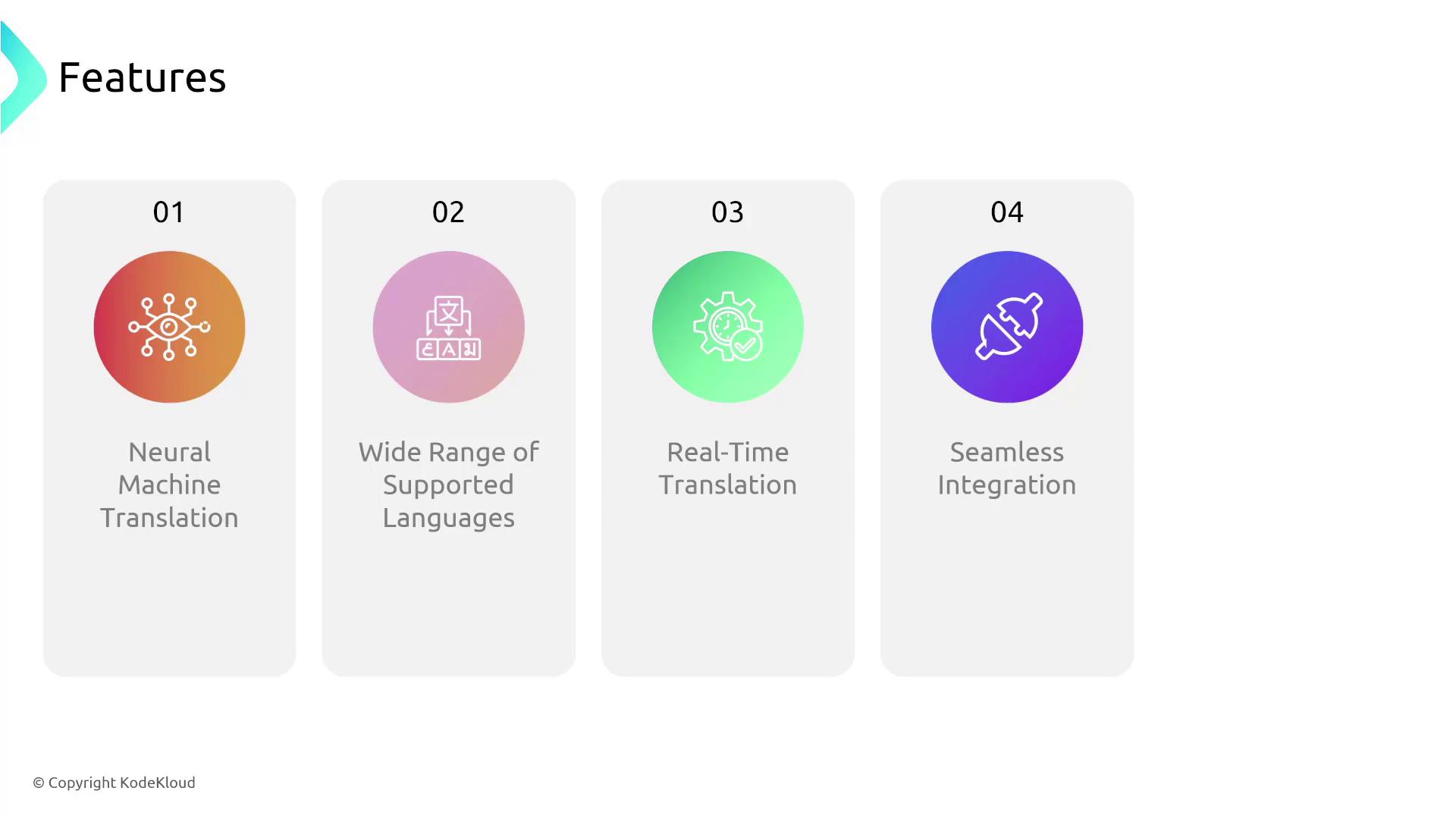AWS Solutions Architect Associate Certification
Services Data and ML
Translate
Welcome future solutions architects. I'm Michael Forrester, and in this lesson we will explore one of AWS's advanced machine learning services—Amazon Translate.
Amazon Translate is a robust language translation service that delivers fast, high-quality, and affordable translations. With support for over 5,000 language combinations, it is an excellent solution for global applications.
For example, consider a chatbot originally designed for an English-speaking audience. By integrating Amazon Translate, the chatbot can seamlessly respond in the user’s native language—such as Japanese—without requiring multiple chatbot deployments or a large multilingual support team.
Workflow Overview
The translation process is straightforward:
- Upload the UTF-8 formatted text to Amazon S3.
- The upload action triggers an AWS Lambda function.
- Lambda invokes Amazon Translate to process the text.
- Amazon Translate returns the translated text, which is then stored back in Amazon S3.

After translation, the text can be used by other services like Amazon Polly for converting text-to-speech or directly displayed in a chatbot interface.

How Translation Works
At the core of Amazon Translate is a neural machine translation (NMT) algorithm, which consists of two main components:
- Encoder: Reads the source text and constructs a semantic representation of the content.
- Decoder: Generates the translated text word-by-word in the target language using the encoded representation.
This NMT approach ensures translations are accurate and natural-sounding, significantly improving upon traditional rule-based or statistical methods. With near real-time processing, translations are completed within milliseconds.

Quick Fact
Amazon Translate leverages state-of-the-art NMT algorithms to deliver translations that sound natural and contextually accurate.
Integration with Other AWS Services
Amazon Translate integrates seamlessly with several AWS services, enabling a broad range of use cases:
- Chatbots & Customer Support: Develop a chatbot in one language (e.g., English) and use Amazon Translate to convert messages into the customer’s native language (e.g., Japanese or Swahili) in real time.
- Voice Communication: Use Amazon Transcribe to convert spoken language into text, translate the text with Amazon Translate, and finally synthesize speech with Amazon Polly.
This integration reduces the need for multiple language-specific implementations. Additionally, Amazon Translate supports custom terminology dictionaries, allowing you to handle domain-specific vocabulary (such as AWS, ECR, or EKS) for consistent and accurate translations.
Another exciting application is the translation of HTML pages. Just like browser translation features in Chrome, you can submit an HTML page to Amazon Translate, which converts the content into the user's native language.
Moreover, when used in conjunction with Amazon Comprehend, you can analyze translated text to derive sentiment, intent, and other insights. This combined approach provides a comprehensive solution for natural language processing and understanding.
Conclusion
In summary, Amazon Translate is a powerful AWS service that uses neural machine translation to deliver fast, accurate, and natural language translations. Its seamless integration with other AWS services like Lambda, S3, Polly, Transcribe, and Comprehend makes it a cornerstone for building globalized applications.
Next Steps
Thank you for following along in this lesson on Amazon Translate. If you have any questions, feel free to reach out on kodekloud.slack.com under AWS Courses. I look forward to seeing you in the next lesson.
Watch Video
Watch video content